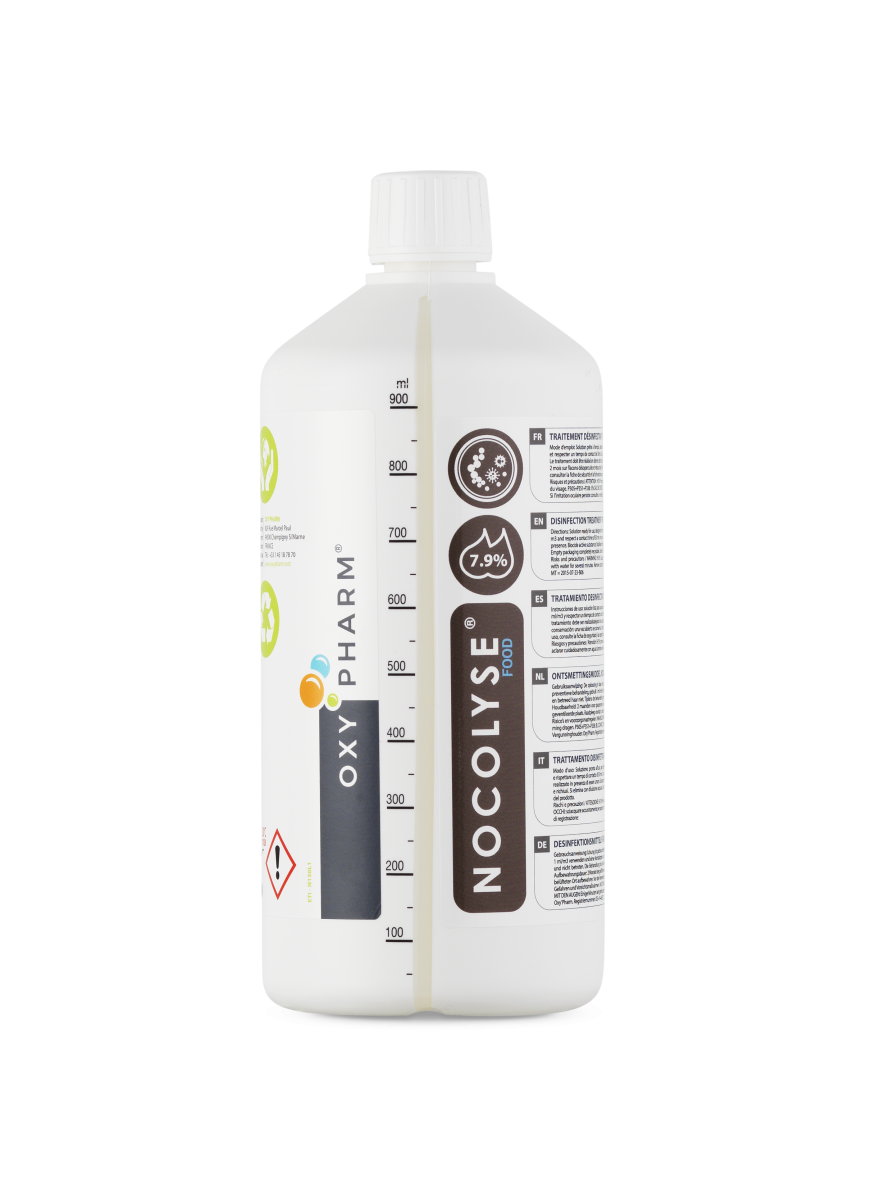Disinfecting inert surfaces in the food industry is crucial to preventing food contamination while ensuring product quality. Oxy’Pharm is world-renowned for its ASD (Airborne Surface Disinfection) concept, and has now developed the Nocotech range. This solution treats surfaces by air, thereby reducing microbiological risks in the agri-food sector and protecting consumers using an eco-friendly approach.

The microbiological contamination of surfaces in the agri-food industry
The agri-food sector faces many challenges in terms of food safety and pathogen control. Preventing microbial contamination is therefore an absolute priority in order to guarantee consumer safety. What’s more, even the smallest contamination incident can have a hugely negative impact on a company’s reputation.
Food processing plants are particularly susceptible to microbiological surface contamination (biofilm formation) and airborne contamination (pathogenic microorganisms adhering to inert, airborne particles). The microorganisms involved in this process are bacteria, molds, or yeasts. Some of them, such as Listeria, Salmonella, or Escherichia coli, can be dangerous to human health.
This is why food companies must comply with food safety regulations and current health standards.
Secondly, the product goes through the clinical phase. This step is decisive since it validates, or not, the effectiveness tested in the pre-clinical phase and makes it possible to evaluate the tolerance of the product on human volunteers. Finally, once all regulatory requirements are met, Marketing Authorization is granted, allowing the company to legally market its product. In the case of the Oxy’Pharm airborne disinfection process, obtaining this Marketing Authorization guarantees the effectiveness and safety of the product, thus ensuring the protection of public health.
HOW TO FIGHT RESISTANT MICRO-ORGANISMS IN THE AGRI-FOOD INDUSTRY
Identifying, assessing, and managing microbiological risks associated with food production is essential for maintaining consistent food quality across the supply chain, from production to distribution. However, traditional disinfection methods for dealing with resistant micro-organisms have their limitations.

For example, an increase in the rate of deviation of microbiological parameters was observed on inert contact surfaces at Omarsa, a seafood operator and processor. Omarsa’s goal is to supply sustainable shrimp worldwide “with a focus on food safety, animal welfare, and traceability.” Omarsa is an integrated company comprising two hatcheries, three shrimp farms, and two processing plants.
The challenge was therefore to reduce the risk of proliferation of microorganisms that are resistant to disinfectants generally used on deep- or superficially-cleaned surfaces. Microbiological and pathogenic indicators were assessed on surfaces cleaned with the elimination of solid and dirty residues using a hydrogen peroxide-based bio-disinfectant. This is a different active ingredient to those currently in use.
The test, carried out by Banda Vanoni, had a twofold objective:
1. To determine the sensitivity of the bio-disinfectant when applied to E. coli, coliform, and aerobic mesophilic bacteria.
2. To determine the effects of the disinfectant on microbiological indicators on inert surfaces.
NOCOTECH: THE ANSWER TO SPECIFIC NEEDS FOR DISINFECTION AND THE ELIMINATION OF RESISTANT PATHOGENS
THE NOCOTECH RANGE: EFFICIENCY MEETS SIMPLICITY
The results obtained during the study at the agri-food company confirm the effectiveness of the Nocospray device and the Nocolyse product:
1. Reduced microbiological parameters in overall mesophilic aerobes and satisfactory results for pathogenic microorganisms.
2. The bio-disinfectant acts by diffusing across completely soiled surfaces or by removing solid residues, acting as a sanitizing agent and reducing microbiological load on surfaces.
